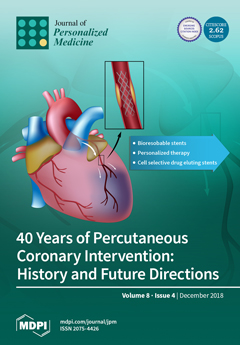Fluoropyrimidine-based chemotherapy is extensively used for the treatment of solid cancers, including colorectal cancer. However, fluoropyrimidine-driven toxicities are a major problem in the management of the disease. The grade and type of the toxicities depend on demographic factors, but substantial inter-individual variation in
[...] Read more.
Fluoropyrimidine-based chemotherapy is extensively used for the treatment of solid cancers, including colorectal cancer. However, fluoropyrimidine-driven toxicities are a major problem in the management of the disease. The grade and type of the toxicities depend on demographic factors, but substantial inter-individual variation in fluoropyrimidine-related toxicity is partly explained by genetic factors. The aim of this study was to investigate the effect of
dihydropyrimidine dehydrogenase (DPYD), thymidylate synthase (TYMS), and methylenetetrahydrofolate reductase (MTHFR) polymorphisms in colorectal cancer patients. Eighty-five patients who were administered fluoropyrimidine-based treatment were included in the study. The
DPYD,
TYMS and
MTHFR polymorphisms were scanned by a next generation Sequenom MassARRAY. Fluoropyrimidine toxicities were observed in 92% of all patients. The following polymorphisms were detected:
DPYD 85T>C (29.4% heterozygote mutants, 7.1% homozygote mutants),
DPYD IVS 14+1G>A (1.2% heterozygote mutants),
TYMS 1494del TTAAAG (38.4% heterozygote mutants, 24.7% homozygote mutants),
MTHFR 677C>T (43.5% heterozygote mutants, 9.4% homozygote mutants) and
MTHFR 1298A>C (8.2% heterozygote mutants, 2.4% homozygote mutants). A statistically significant association was demonstrated between
MTHFR 677C>T and fluoropyrimidine-related toxicity (
p value = 0.007). Furthermore,
MTHFR 1298A>C was associated with hematopoietic toxicity (
p value = 0.008).
MTHFR polymorphisms may be considered as related factors of fluoropyrimidine toxicity and may be useful as predictive biomarkers for the determination of the colorectal cancer patients who can receive the greatest benefit from fluoropyrimidine-based treatments.
Full article






